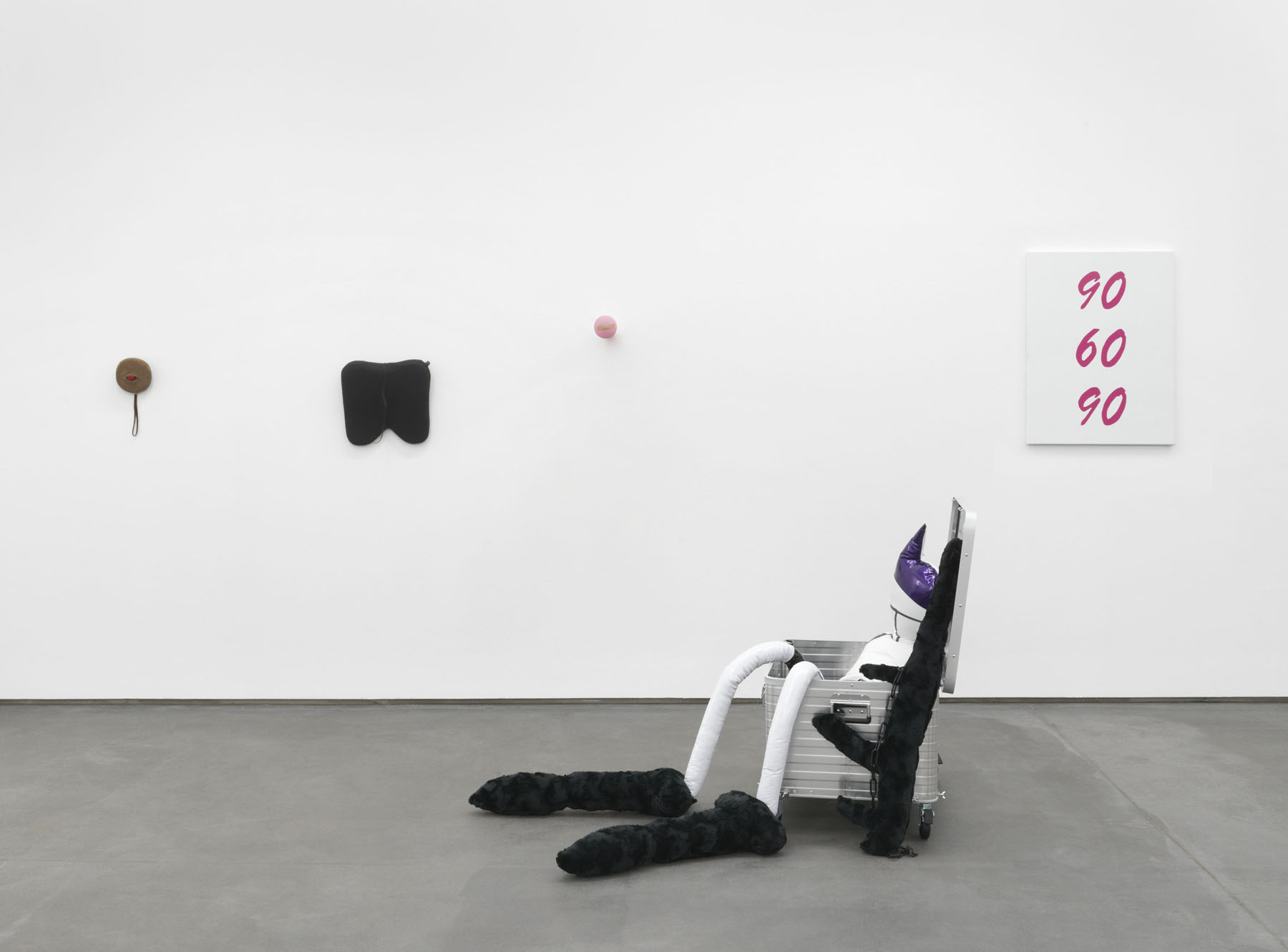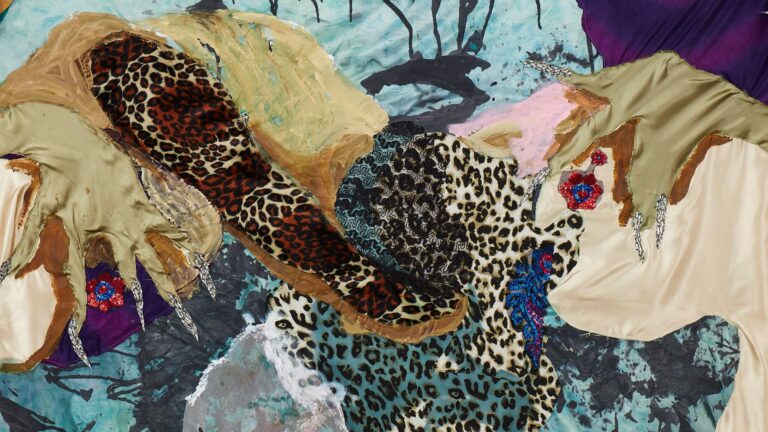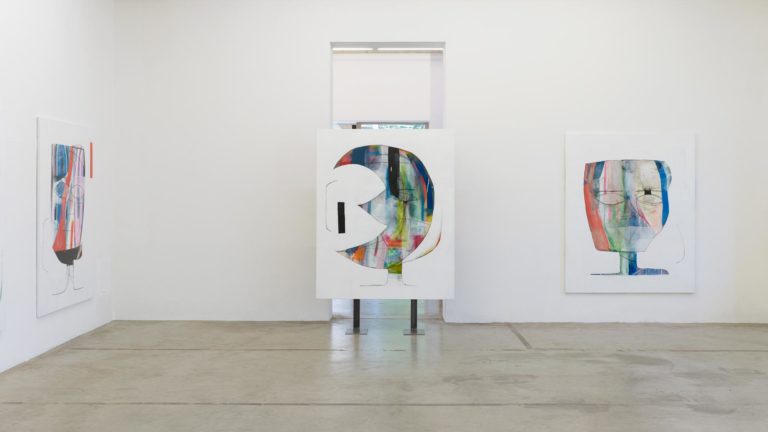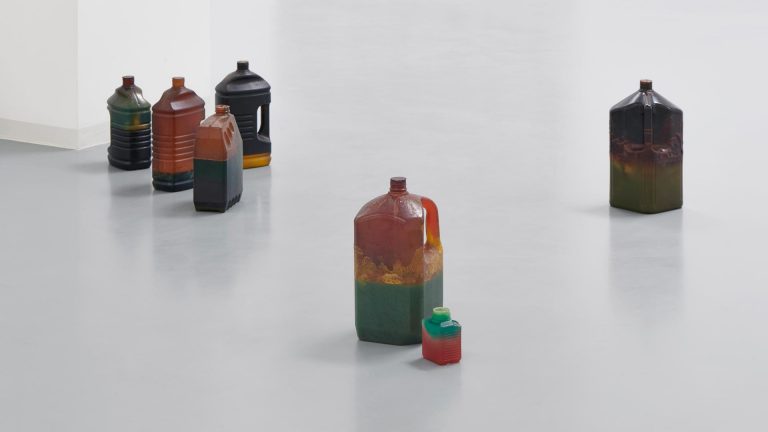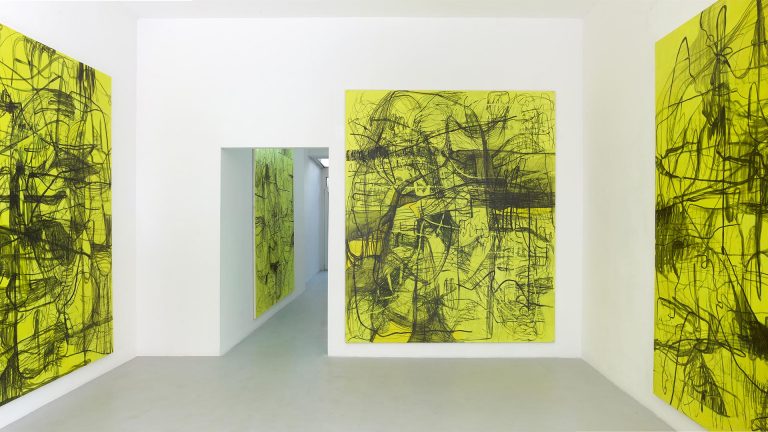Artists: Jacques Bonnard, Tina Braegger, Natacha Donzé, Sylvie Fleury, Frédéric Gabioud, Stéphane Kropf, Miriam Laura Leonardi, Thomas Liu Le Lann, Charly Mirambeau, Denis Savary, Claire Van Lubeek, Romane De Watteville
Exhibition title: Duna Bianca
A Proposal by: Alfredo Aceto
Venue: DITTRICH & SCHLECHTRIEM, Berlin, Germany
Date: February 8 – May 16, 2020
Photography: all images copyright and courtesy of the artists and DITTRICH & SCHLECHTRIEM, Lausanne
DITTRICH & SCHLECHTRIEM is pleased to present a proposal by gallery artist ALFREDO ACETO titled DUNA BIANCA and including works by selected Swiss-based artists JACQUES BONNARD, TINA BRAEGGER, NATACHA DONZÉ, SYLVIE FLEURY, FRÉDÉRIC GABIOUD, STÉPHANE KROPF, MIRIAM LAURA LEONARDI, THOMAS LIU LE LANN, CHARLY MIRAMBEAU, DENIS SAVARY, CLAIRE VAN LUBEEK, and ROMANE DE WATTEVILLE. The exhibition focuses on a cross-section of artists of different generations working in and around Lausanne, Geneva, and Zurich specifically, with a variety of media and artistic practices, from painting to large scale sculpture, and at different stages of national and international exposure.
The title, DUNA BIANCA, quotes the song of the same title by the Italian metal/rock band Trombe di Fallopio on their 1994 album Santi Numi. The titular Duna is the iconic Italian car, produced by FIAT between 1985 and 2000, a particularly gangly vehicle that became the target of satire and mockery over the years. Considered to be one of the major failures of the automotive industry, the Duna still found a large success outside the European market, perhaps due to its practicality and low cost. In contrast to the clumsy design rejected by critics, the song “Duna Bianca” portrays an emotional version of that car, almost personified and full of tenderness.
Aceto’s classification and the reference to the song as a pseu-do-organizational device in selecting the artists are purely an expedient; nothing here represents an exclusive choice. Rather, the show is an excuse for bringing together multiple positions. Instead of presenting artistic practices in an exhaustive or chronological way, it charts a fragmentary journey in which the twelve artists come together through friendship and / or common influences, while distinctly avoiding the risk to be too discursive.
The above concepts were addressed by Alfredo Aceto in a conversation with Samuel Gross. A complete catalog with an exhibition essay by Samuel Gross will be published and available at the gallery in mid-February 2020. For further information on the artists and the works or to request images, please contact Owen Clements, owen(at)dittrich-schlechtriem.com.
BONNARD’s (b. 1954) three Untitled wall sculptures draw on a limited repertoire of materials coming from daily routines. These objects, slightly modified or combined, remain isolated, suspen-ded in an entropic relation to each other.
BRAEGGER (b. 1985) presents a new painting depicting the iconic Grateful Dead bear logo. Braegger works with this exact symbol since 2011.
DONZÉ’s (b. 1991) image composition in The Committee ques-tions social codes, stereotypes, commonplaces and fables of popular culture, disrupting collective memory.
FLEURY (b. 1961) presents Labrisrynthe, an iconic 2008 work re-sembling a monumental shark tooth in shiny silver, an object that is revered as a talisman in Polynesian culture. Through her films, sculptures, paintings, and performances, Fleury explores the re-lationships between art making and the mechanics of consume-rism, fetishism, commodification, and identity.
GABIOUD’s (b. 1990) paintings develop a clear, fresh and acidic monochrome pictorial vocabulary. Revisiting the heritage of major Swiss and American movements, Gabioud reveals clear affinities with Minimalism and Neo-Geo.
KROPF (b. 1979) participates with a “spiral” painting from a series whose making involves the use of stencils cut with a laser plotter. Pushing this technology to its limits to create impossibly thin spi-rals, he then uses a spray gun to lay down swirls of acrylic paint.
LEONARDI’s (b. 1985) painting is a throwback to a period when women used to measure their breasts, waists, and hips. The 90–60–90 used to represent a certain idea of ideally standardi-zed body. Today, those numbers have lost their meaning which goes hand in hand with the falling stocks of the lingerie brand Victoria’s Secret.
LIU LE LANN (b. 1994) creates soft sculptures installed on the ground, characters without faces or expressions, whose only vi-sible atti-tude seems to have given up on the world around them, overwhelmed and weary modern superheroes.
MIRAMBEAU (b. 1995) proposes a wardrobe sculpture, Branlante, made of different types of wood stitched together and dividing the external space from the intimate perimeter of a war-drobe; here only suggested.
SAVARY (b. 1981) exhibits three sculptures elegantly hung from the ceiling, titled Hanoï. Savary’s practice interweaves narrati-ves steeped in childhood fantasies and adult phantasmagoria with fictionalized fragments from art and literature and historical figures.
VAN LUBEEK’s (b. 1990) sculpture What’s Cooking invites the viewer to set foot into a dystopian, post-apocalyptic world and cheekily criticizes the capitalist system.
DE WATTEVILLE’s (b. 1994) large-scale painting You and me in the motel, pursues her interest in the history of portraiture by ex-amining the different layers that it brings to the determination of self. With a fine sense of humor, she plays with the stereotypes and the canons of portraits in our iconography.
Duna Bianca, 2020, exhibition view, DITTRICH & SCHLECHTRIEM, Berlin
Duna Bianca, 2020, exhibition view, DITTRICH & SCHLECHTRIEM, Berlin
Duna Bianca, 2020, exhibition view, DITTRICH & SCHLECHTRIEM, Berlin
Duna Bianca, 2020, exhibition view, DITTRICH & SCHLECHTRIEM, Berlin
Duna Bianca, 2020, exhibition view, DITTRICH & SCHLECHTRIEM, Berlin
JACQUES BONNARD, Untitled, 2017, Plastic, plaster, 43 x 10 x 5 cm / 17 x 4 x 2 in
JACQUES BONNARD, Untitled, 2017, Polyester, hairs, 35 x 35 x 8 cm / 13 3/4 x 13 3/4 x 3 1/4 in
JACQUES BONNARD, Untitled, 2019, Fabric, wax, 33 x 15 x 4 cm / 13 x 6 x 1 1/2 in
MIRIAM LAURA LEONARDI, 50×50 (Born), 2019, silkscreen on canvas, 50 x 50 cm / 19 2/3 x 19 2/3 in
NATACHA DONZÉ, The committee, 2019, acrylic, on canvas, 55 x 180 cm / 21 2/3 x 70 3/4 in
ROMANE DE WATTEVILLE, You and me in the motel, 2019, acrylic, oil, on canvas, 175 x 155 cm / 69 x 61 in
SYLVIE FLEURY, Labrisrynthe, 2008, painted fiberglass, 205 x 45 x 215 cm / 80 2/3 x 17 3/4 x 84 2/3 in, Copyright Sylvie Fleury, Courtesy Sylvie Fleury and Mehdi Chouakri, Berlin, Photo: Jens Ziehe, DITTRICH & SCHLECHTRIEM, Berlin
SYLVIE FLEURY, Fur Fetish, The Silver Screen Survey 4, 1997, 10 typewritten paper tissues, framed, Dimensions variable, Copyright Sylvie Fleury, Courtesy Sylvie Fleury and Mehdi Chouakri, Berlin, Photo: Jens Ziehe, DITTRICH & SCHLECHTRIEM, Berlin
STÉPHANE KROPF, Trouble (Again), 2015, acrylic, on canvas, 180 x 180 cm / 70 3/4 x 70 3/4 in
CHARLY MIRAMBEAU, Branlante, 2019, smoked beech, eucalyptus, smoked oak, amaranth, jute rope, spruce, 130 x 60 x 230 cm / 51 1/4 x 23 2/3 x 90 1/2 in
FRÉDÉRIC GABIOUD, Pad, 2019, acrylic, on canvas in 4 parts, 183 x 204 x 3.5 cm / 72 x 80 1/3 x 1 1/3 in
FRÉDÉRIC GABIOUD, Softpad, 2019, acrylic, on canvas in 4 parts, 183 x 204 x 3.5 cm / 72 x 80 1/3 x 1 1/3 in
DENIS SAVARY, Hanoï IV, 2017, Polystrene, wood, resin, metal, 110 x 70 x 60 cm / 43 1/3 x 27 1/2 x 23 2/3 in, Copyright Denis Savary, Courtesy DITTRICH & SCHLECHTRIEM, Berlin and Galerie Maria Bernheim, Zuric
DENIS SAVARY, Hanoï I, 2017, Polystrene, wood, resin, metal, 110 x 70 x 60 cm / 43 1/3 x 27 1/2 x 23 2/3 in, Copyright Denis Savary, Courtesy DITTRICH & SCHLECHTRIEM, Berlin and Galerie Maria Bernheim, Zurich
DENIS SAVARY, Hanoï V, 2017, Polystrene, wood, resin, metal, 110 x 70 x 60 cm / 43 1/3 x 27 1/2 x 23 2/3 in, Copyright Denis Savary, Courtesy DITTRICH & SCHLECHTRIEM, Berlin and Galerie Maria Bernheim, Zurich
THOMAS LIU LE LANN, Allen I, 2018, vinyl, cotton, rhinestones, tulle, polyester wadding, 240 x 40 x 12 cm / 94 1/2 x 15 3/4 x 4 3/4 in, Copyright Thomas Liu Le Lann
Courtesy DITRICH & SCHLECHTRIEM, Berlin and Xippas, Geneva
TINA BRAEGGER, Red Dog, 2020, oil, on canvas, 190 x 180 cm / 74 3/4 x 70 3/4 in, Copyright Tina Breagger, Courtesy DITTRICH & SCHLECHTRIEM, Berlin and Weiss Falk, Basel






